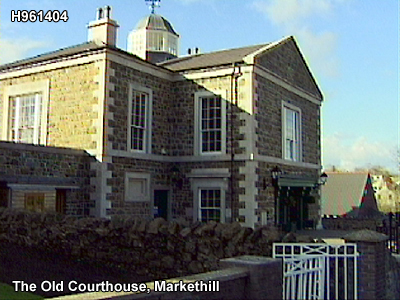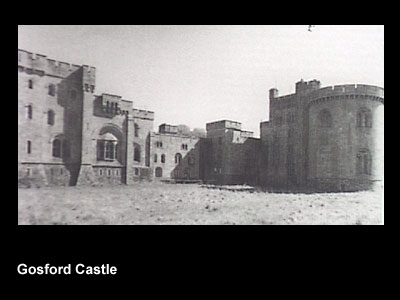

Dotted throughout the district are quite a number of period houses and buildings. Next to the rural splendour of the countryside these buildings are a testament to the artistic ambition of man and reflect the diverse and often eclectic taste of man through the centuries.
Best remembered in the district for their architectural endeavours are the three Thomas's: Thomas Duff, Thomas Cooley and Thomas Hopper.
THOMAS DUFF (1792-1848)
Architect of Markethill Courthouse.
A native of Newry, Duff is better remembered for his ecclesiastical designs than for his secular works. Duff favoured the Tudor Gothic style of architecture and is credited with having designed the spectacular Catholic Cathedral at Newry. He also drew up the original plans for the Catholic Cathedral at Armagh but following his death his plans were altered beyond recognition by JJ McCarthy. In the secular realm, Duff designed two very similar courthouses at Newry and Markethill.
THOMAS COOLEY (c.1740-1784)Architect of St.John's Church of Ireland, Lisnadill.
Thomas Cooley was born in England and served his apprenticeship in London. He came to Ireland after winning a competition to design the Royal exchange in Dublin.
Thomas Cooley and Richard Robinson are names synonymous with the city and district of Armagh. With Archbishop Robinson providing the financial resources Cooley designed and oversaw the building of the Archiepiscopal Palace, Public Library and Royal School. Like Duff, Cooley also operated within the ecclesiastical realm. A prolific architect, he provided Archbishop Robinson with a pattern book of designs, allowing Robinson to choose a church for a site. A common feature of all Cooley-Robinson churches is that they are built on hills.
THOMAS HOPPER (1776-1856)Architect of Gosford Castle.
A leading London architect of the early nineteenth century, Hopper was something of an eclectic designer, mixing styles and period with reckless abandon. His style was premised on the belief that an architect should be proficient with all styles but favour none. In saying that, it is true that Hopper's two most famous works are his Norman revival castles at Penrhyn and Gosford.
Some way into the construction of Gosford Castle Hopper crossed words with Lord Gosford and wrote:
"I have always felt a sorrow that I ever went to Ireland. I now consider it a misfortune..."
Hopper died in August 1856 never having seen his Castle at Gosford completed.


